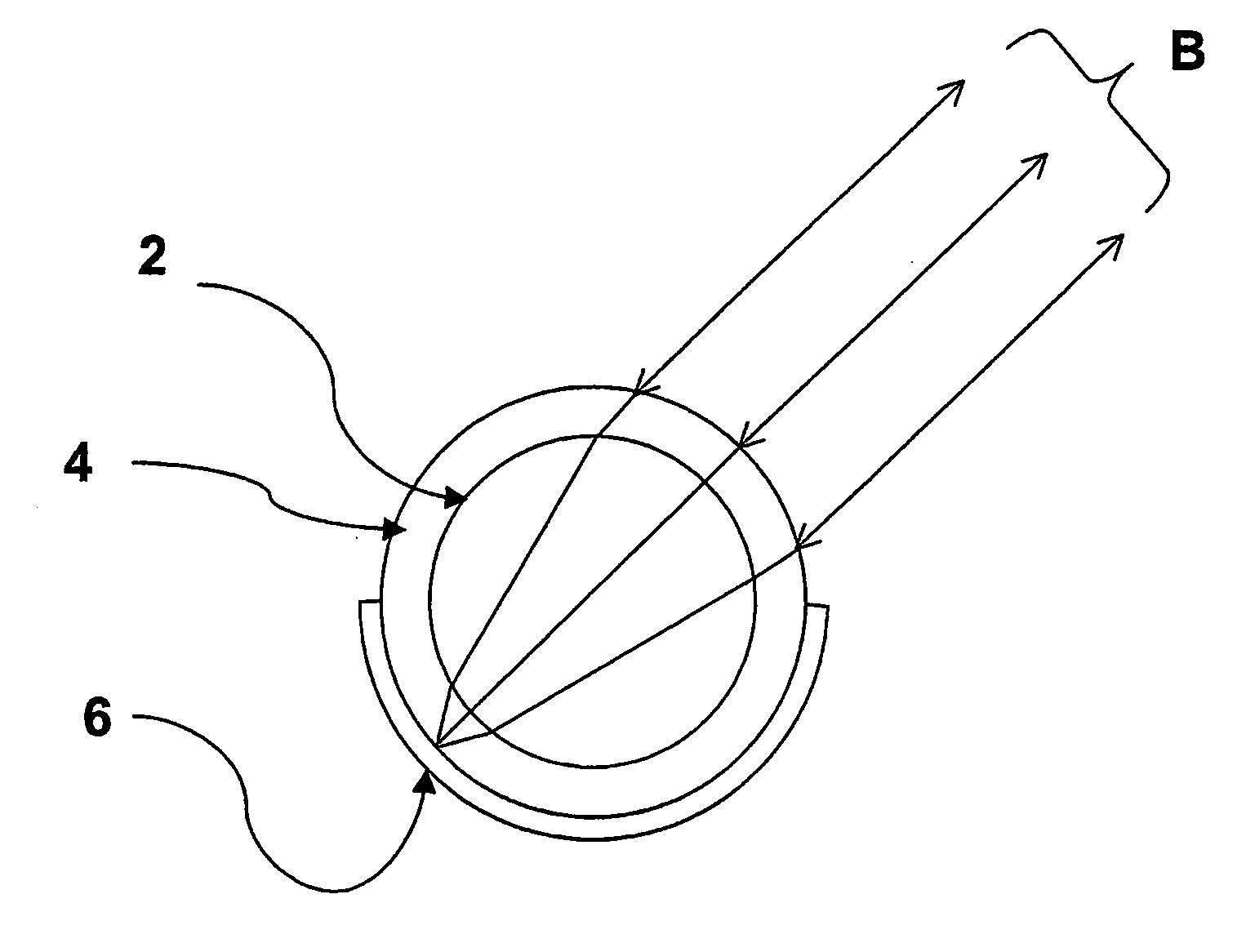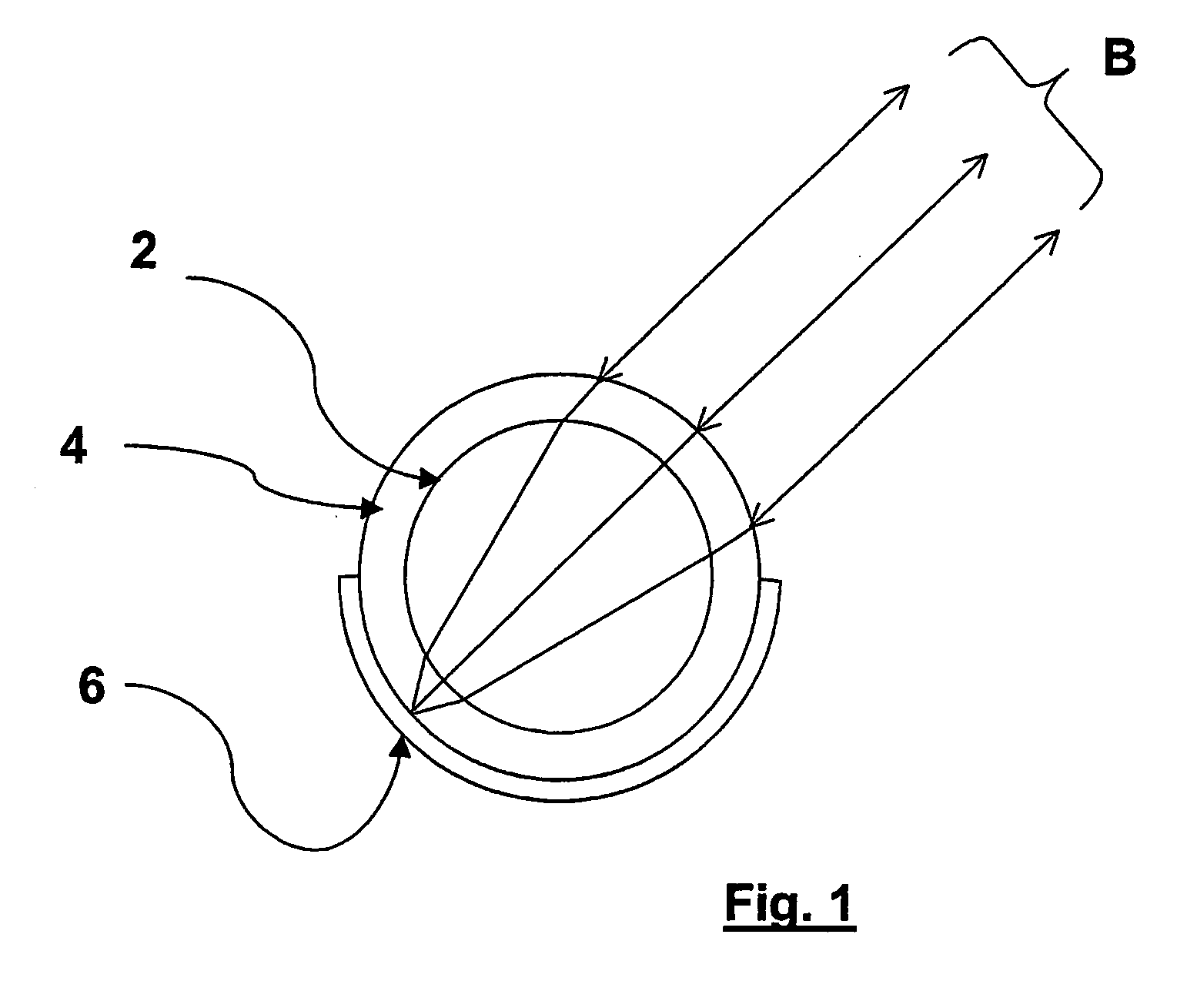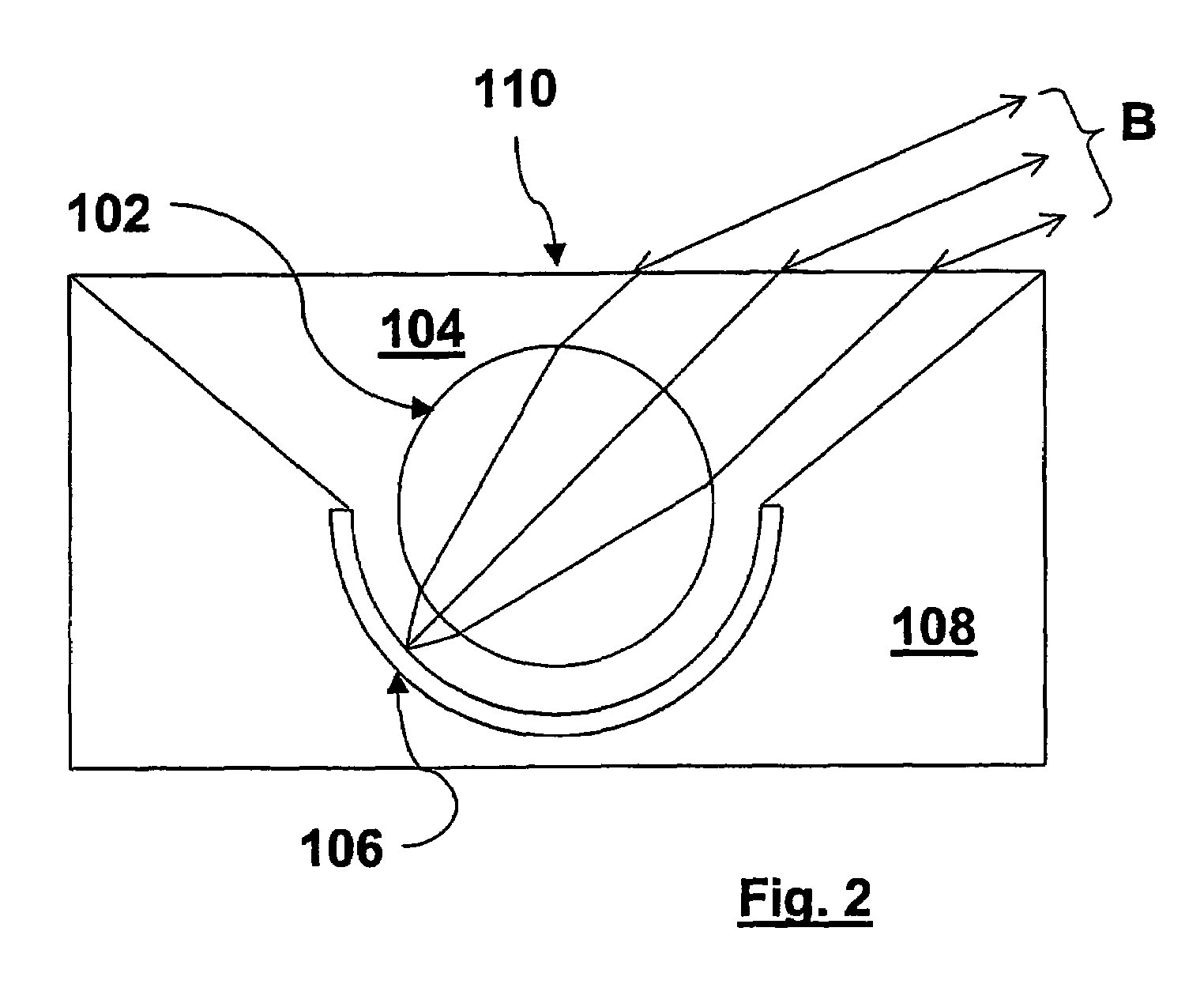Retroreflective device comprising gradient index lenses
a technology of gradient index and retroreflective device, which is applied in the direction of optics, lenses, instruments, etc., can solve the problems of limited field of view of devices, high cost of components, and inability to cover arbitrary angles of incidence across a full hemisphere, and achieve the effect of wide field
- Summary
- Abstract
- Description
- Claims
- Application Information
AI Technical Summary
Benefits of technology
Problems solved by technology
Method used
Image
Examples
first embodiment
[0024]FIG. 1 shows a retroreflective device based on a GRIN-sphere lens arranged in accordance with the invention. The upper hemisphere of the mechanical surface of the GRIN-sphere lens 2, shown as a solid circle 2, is the surface through which an incident radiation beam B (which is assumed to be a parallel beam) passes into the GRIN-sphere lens.
[0025]In order to improve the optical characteristics of the device, the GRIN-sphere lens 2 is clad in, or otherwise coated with, a transparent material 4 having a uniform refractive index of a particular, desired value. The transparent material has a uniform thickness, and has an outer spherical surface which is arranged concentric with the outer surface of the GRIN-sphere lens 2. The upper surface of the transparent material forms the entrance face of the device. Although not shown in FIG. 1, the entrance face of the transparent material 4 (and indeed the equivalent surfaces shown in other figures hereof) may be provided with an anti-refle...
second embodiment
[0030]the invention is shown in FIG. 2. Here, components similar to that shown in FIG. 1 are given the same reference numerals, incremented by 100. The GRIN-sphere lens 102 is immersed in, and may be at least partially supported by, an environment comprising a transparent solid material 104 of uniform refractive index, having a chosen relationship with the refractive index at the GRIN-sphere surface. The transparent material may be supported by a solid structure 108, which may for example have a lower surface formed, for example as a planar surface, so as to stably support the device in a preferred orientation on a horizontal surface. A reflective material 106 is formed on a boundary between the transparent material 104 and the solid structure 108.
[0031]Alternatively, depending for example upon the use for which the device is intended and / or the treatment to which it may be subjected, the lens may be immersed in a transparent liquid material and supported by thin filaments (not show...
third embodiment
[0033]FIG. 3 shows the invention, which reduces angularly-dependent retroreflectivity and polarisation effects. Here, components similar to those previously described have the same reference numerals, incremented by 100. The transparent material 204 is given a hemispherical outer shape. The material may in this embodiment be protected by a transparent optical dome casing (not shown) made of a relatively hard material, such as glass. This arrangement reduces the variation of reflection performance with incidence angle, compared to the embodiment shown in FIG. 2. The rays encountering the GRIN-sphere can be made effectively paraxial with respect to the lens formed by the outer surface 210, provided that the radius of curvature of the outer surface is made sufficiently large compared to the radius of the outer surface of the GRIN-sphere lens 202. Due to the preferred relatively large radius of curvature of the outer surface of the transparent material 204 at the entrance face 210, the ...
PUM
| Property | Measurement | Unit |
|---|---|---|
| Radius | aaaaa | aaaaa |
| Transparency | aaaaa | aaaaa |
| Distribution | aaaaa | aaaaa |
Abstract
Description
Claims
Application Information
 Login to View More
Login to View More - R&D
- Intellectual Property
- Life Sciences
- Materials
- Tech Scout
- Unparalleled Data Quality
- Higher Quality Content
- 60% Fewer Hallucinations
Browse by: Latest US Patents, China's latest patents, Technical Efficacy Thesaurus, Application Domain, Technology Topic, Popular Technical Reports.
© 2025 PatSnap. All rights reserved.Legal|Privacy policy|Modern Slavery Act Transparency Statement|Sitemap|About US| Contact US: help@patsnap.com



